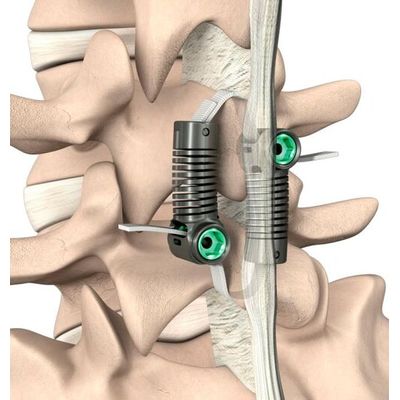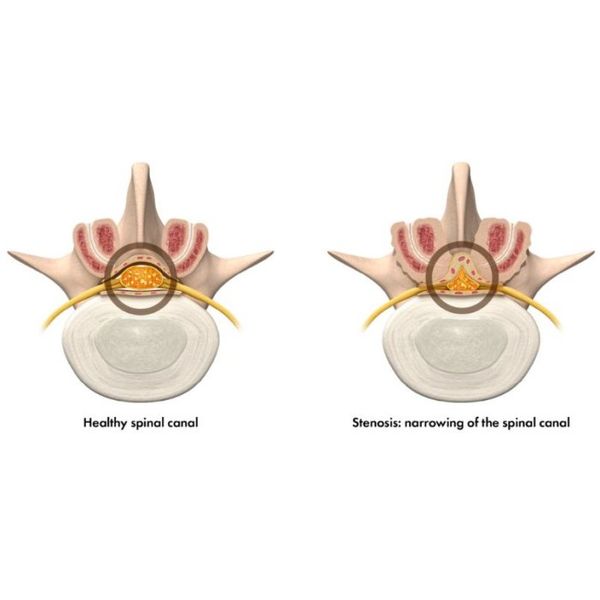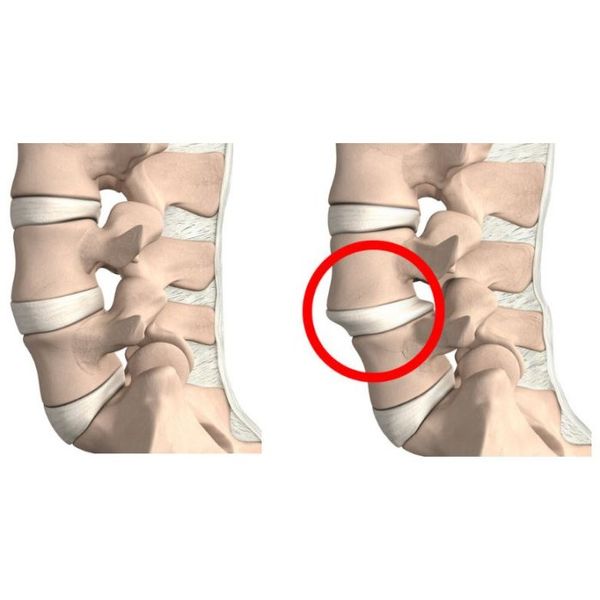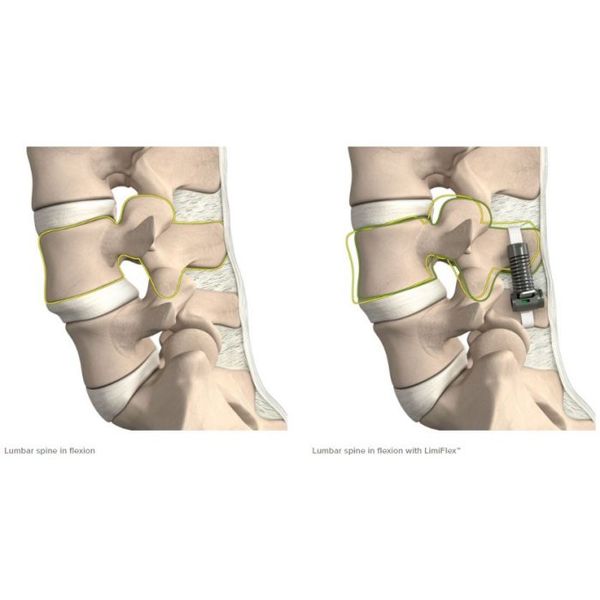

- Home
- Companies
- Empirical Spine, Inc.
- Products
- LimiFlex - Dynamic Sagittal Tether

LimiFlex - Dynamic Sagittal Tether
LimiFlex is intended to provide segmental stabilization following decompression for grade 1 lumbar degenerative spondylolisthesis with spinal stenosis. LimiFlex is implanted through a dorsal approach, typically through the same incision used for the surgical decompression.
Biomechanical studies have demonstrated that in a cadaveric model, LimiFlex™ restores the range of motion of a destabilized segment and increases segmental stiffness; stabilization in flexion has a corresponding effect on translational stability.¹
Primarily in Europe, more than 2,000 patients have been treated using LimiFlex™ for segmental stabilization following surgical decompression.
The LimiFlex™ Dynamic Sagittal Tether is designed to resist the separation of two adjacent spinous processes through progressive tensile forces applied by polyethylene straps attached in a loop to a pair of titanium couplers sitting on either side of the spinal midline. Cadaveric biomechanical testing has demonstrated that by resisting spinous process separation, the system reduces segmental flexion and maintains facet engagement, stabilizing the treated segment in flexion. Because flexion and segmental translation are coupled, segmental translation is also stabilized.¹
Cadaveric biomechanical testing has demonstrated that LimiFlex™ may provide sagittal plane stability to destabilized spinal motion segments by:
- restoring flexion range of motion
- increasing high flexibility zone stiffness
- controlling sagittal translation
- promoting facet joint engagement in flexion
LimiFlex is a potential alternative to spinal fusion, which has persistent and well-documented drawbacks, including being highly invasive and expensive and carrying a high risk of surgery-related complications and re-operations.
Spinal stenosis is a common disease of the aging lumbar spine. It involves a narrowing of the space around the spinal cord and the nerve roots in the lower back. This puts pressure on nerves and causes pain, numbness, and weakness in the legs and hips, with an impaired ability to walk and, in some cases, back pain.


The symptoms of lumbar spinal stenosis can sometimes be successfully addressed with non-operative treatments such as physical therapy and medications. When non-operative treatments fail, surgeons often elect to perform surgical decompression. After such surgical removal of bone and soft tissue that are pushing on the nerves, symptoms usually improve in the short term. However, the removal may increase spinal instability. This can lead to symptoms returning and even becoming worse.
In some cases, it is necessary to stabilize the treated spinal segment after surgical decompression using a spinal implant. Rigid fixation and fusion is accepted as the gold standard for stabilization of patients with segmental instability.
Fusion has been around for a long time and is a great solution for many patients. However, as a mature technology, fusion’s drawbacks are also well known and persistent. By modern standards, fusion surgery is invasive and lengthy as well as expensive. Moreover, it exposes the patient to significant risk of sequelae.
This series shows one of the major complications of spinal fusion, adjacent level breakdown, which occurs in roughly 30 – 50% of patients in the 5 – 10 years after fusion. In this series you can see the disc above the fused levels collapse in the 18 months after a 3-level fusion due to increased stress and motion related to the fusion below.
As a result, this fusion is extended to the next level in panel F. Adjacent level degeneration represents a major worry for patients and physicians.
The LimiFlex™ Dynamic Sagittal Tether is a new potential alternative to spinal fusion for patients receiving surgical decompression for grade 1 lumbar degenerative spondylolisthesis with spinal stenosis.

LimiFlex is designed to restore natural segmental motion and stability after lumbar decompression by augmenting the posterior tension band. This creates elastic resistance to flexion and maintains lordosis, giving patients the stabilization their spines need while preserving normal motion. The Dynamic Sagittal Tether is intended to be an alternative to spinal fusion, which has persistent and well-documented drawbacks, including being highly invasive and expensive and carrying a high risk of surgery-related complications and re-operations.
LimiFlex uses a novel design that works with the body’s natural anatomy to provide the incremental stability needed by maintaining lordosis and encouraging facet engagement. Unlike interspinous spacers, LimiFlex only engages when a patient bends forward, which avoids delivering excess force and stress on the spinous processes with each step. LimiFlex was designed to act as a ligament to augment the natural anatomy after a thorough decompression for the stenosis. It is compatible with current decompression techniques and is inserted without screws to reduce procedural morbidity and preserve the option for other treatments if needed.


